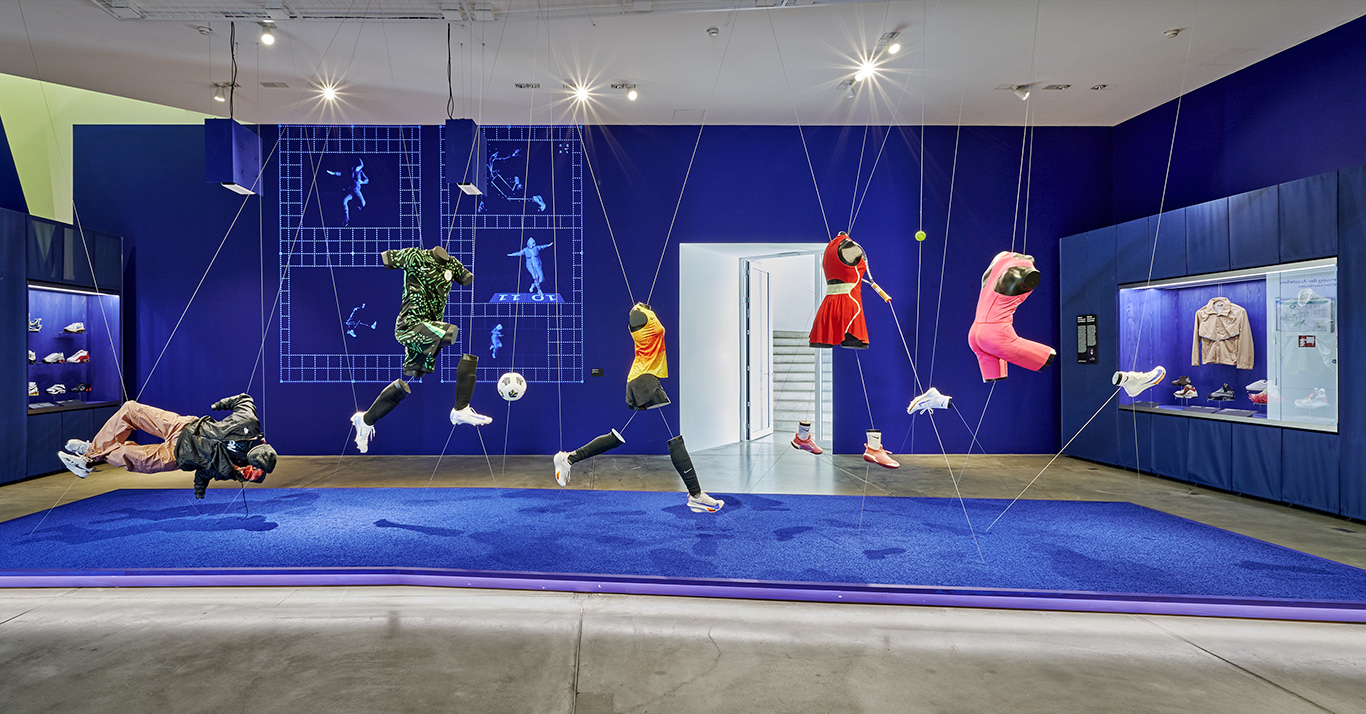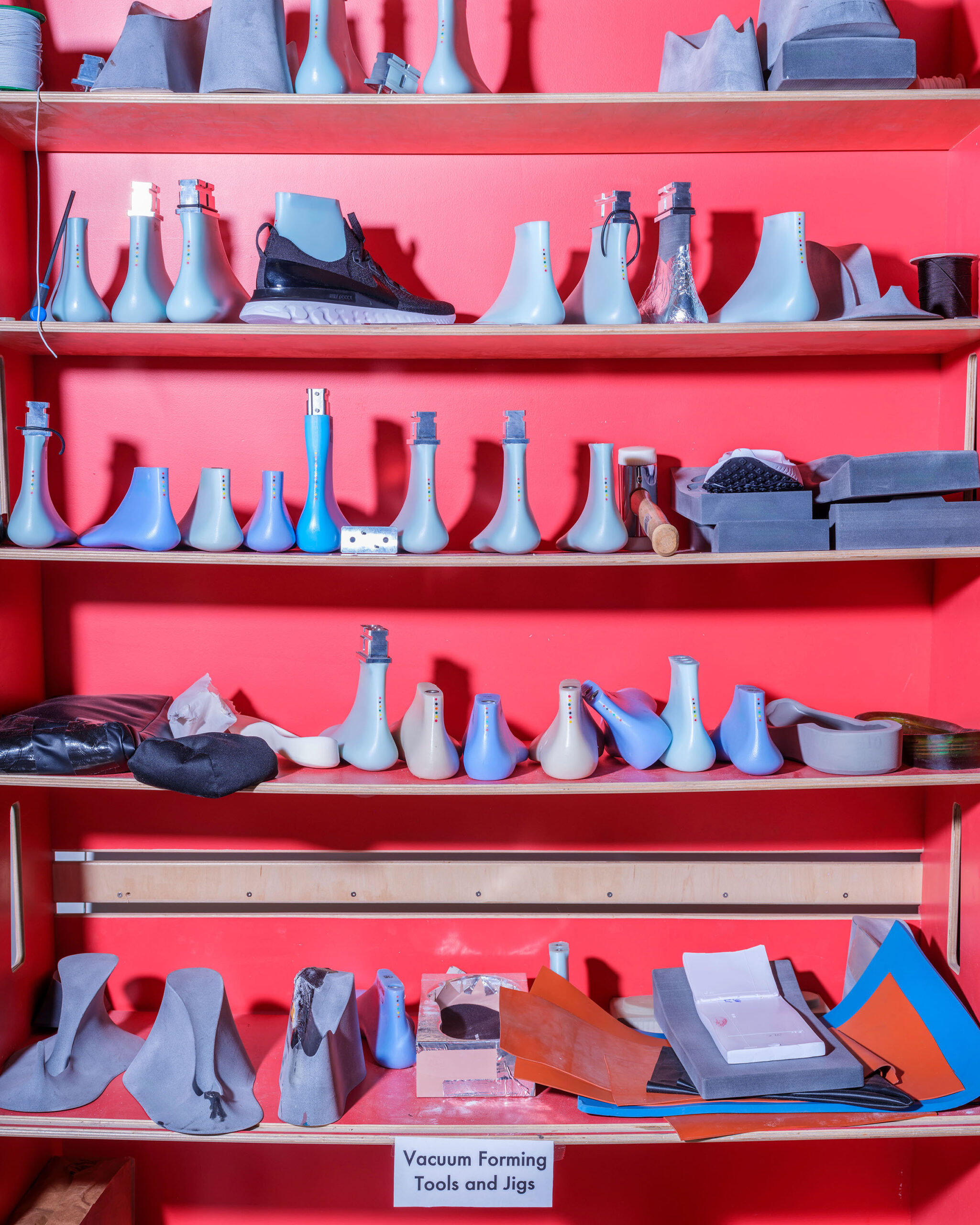Crafting a showcase of 50 years of design in a single space was the sole task for the curation team at the Vitra Design Museum in Weil am Rhein, Germany, just outside of Basel, Switzerland.
But this mission also involved a deep dive into Nike's vast archive of over 200,000 artifacts in order to display a visual chronology of the company's humble running origins of the 1960s to the design innovation of present day.
The result is "Form Follows Motion," an exhibition open to the public at Vitra until May 4 with a significant portion of the items being shown for the first time. Stepping into the space, visitors can expect to see prototypes, drawings, historic film footage and the actual tools that were influential in breaking the company into the running shoe landscape — en route to dominating the sports apparel space through design.
The tour of the museum is a self-guided trek of just four themes: Track, Air, Sensation and Relation — with an emphasis on chronology to shed light on the equal union of advancements in sports, innovation and culture.




















